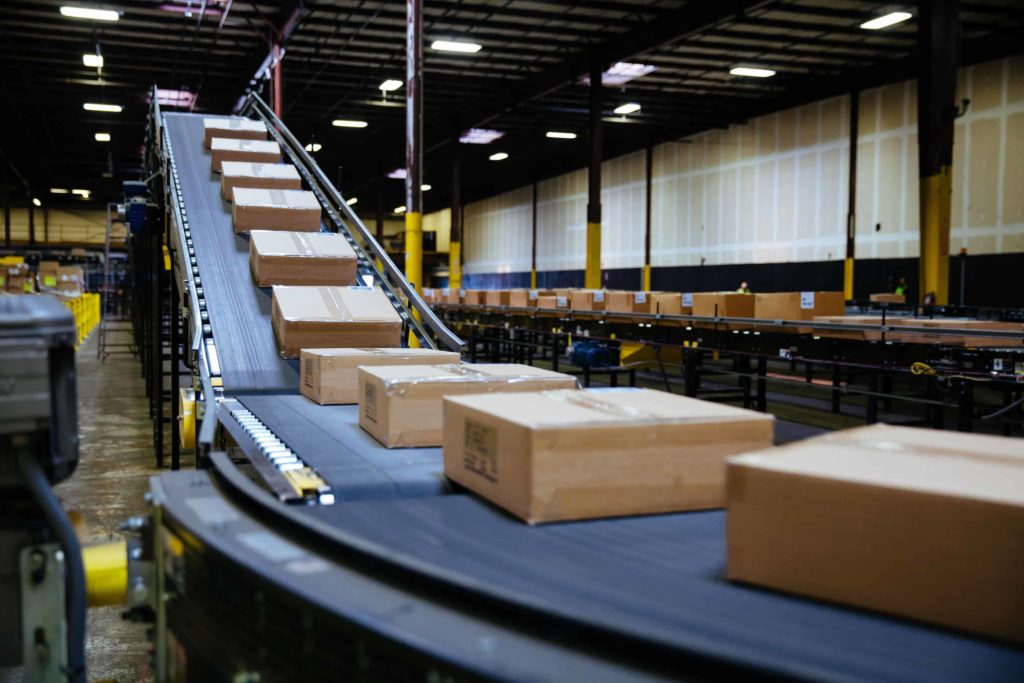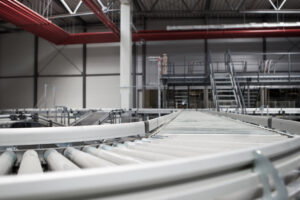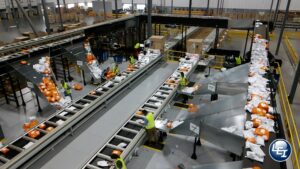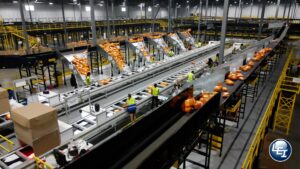Are you ready for peak season? Optimize your facilities now for the fast-paced winter months.

Summer is finally here! For those of us in the materials handling world that means one thing- peak season is right around the corner.
Peak season is the highlight of the year — where the pace is fast, the sales are high, and we’re all wiped out by the New Year. But we love it. In fact, 40% of retail businesses say that half of their annual sales come during peak season. Summer is the perfect time to begin planning for the fourth quarter rush. The earlier we prepare, the easier distribution will flow during the holiday season.
To help you get ahead of the curve, we’ve put together a few tips for you. This article will help you hit peak season right in stride, so you can make the most of it and call Q4 a big win!
1. Start With An Assessment
The first step is to analyze what you already have, what you need, and what your budget will be for the year. Begin your peak season preparations with a clear understanding of what your facility is capable of.
- How much volume of products do you move out of your facility on a normal basis?
- How much more volume do you anticipate during busy months?
One thing that may slip through the cracks in your assessment is scanning percentage. It is so critical to make sure your scanners are reading at a high percentage before peak happens. As orders increase during busy times, you’ll be running at high speeds and moving more products. This is not the time to find out that your scanners aren’t capable of higher volumes.
Another important factor of your assessment should be supplier relationships. Examine your supplier relationships now to determine whether you have a clear line of communication with them. As you go into peak season, you’ll want to be confident that your needs will be met if you get into a pinch.
2. System Maintenance + Stock Up Now.
Imagine you’re right in the middle of peak season and one of your key machines breaks down. The horror.
This is why updating systems and preventative maintenance is where you will find the most benefit from early planning. Now is the time to update your system and perform any needed maintenance — not in the middle of a holiday surge.
One easy, but absolutely critical, thing to do is make sure you have plenty of spare devices. Lead times are still out of control, so it’s best to stock up for what you might need right now. Manufacturers are under immense pressure due to equipment shortages and with current lead times you cannot afford to have long periods of downtime — especially during peak season. If suppliers cannot guarantee to get the parts to you in a timely manner, place your order now. It’s best to be at the top of the list in this case!
Be sure to conduct a proper analysis of your entire system. We suggest you really look for small details like loose equipment, or seemingly insignificant parts like greasing components. It really is better to be safe than sorry!
3. Incorporate Automation To Fill Gaps.
For many businesses, it makes sense to add more shifts or hire seasonal temporary employees. But in some areas, adding more workers during the holiday rush just doesn’t make sense. So another way to add extra help in areas that are too small for more bodies is automation. This can be a huge help, as automated systems can run continuously, and generally without the human error element.
Automation upgrades can cost a significant investment, but overall, the labor savings and simplification of your distribution process pays for itself end over end.
4. Consider Your Picking Strategies.
Different seasons call for different demands, and thus different strategies.
For example, when approaching Halloween, customers may order several different types of candy as well as a myriad of decorations and costumes. This season leads to an increase in multi-line order fulfillment.
In contrast, many retail facilities will promote a specific product for a period of time, creating a single line order spike.
Consider the upcoming demand, so you can choose the appropriate picking strategy. Picking is sometimes one of the biggest cost factors, so it would be wise to develop a cost analysis that calculates whether it is more cost effective to ship items individually or consolidate items. Make sure your facility has the flexibility in place to ensure that all types of orders can flow without disruptions.
5. Learn From Last Year and Be Flexible.
If 2020 taught us anything, it’s to always expect the unexpected. We’ve learned (some the hard way) that adaptability is a key survival component in 2021 and beyond — across every industry.
Last year, there was a massive increase in ecommerce and retail sales, and 2021 seems to be following that same trend.
So, what can you learn from last year?
- What went right?
- What could you have done better?
- Did you develop an emergency plan that you can build on?
Maybe you just rolled with the punches last year and got away with it unscathed. Or maybe your equipment wasn’t up to speed with the new demand, and you struggled to keep up. Whatever the case, look back on 2020 and take notes. You want to be in a better position this year.
Rush season is going to be intense, there’s no doubt about it. The final quarter can make or break your business. While there is no one-size-fits-all approach to preparing for peak season, the main takeaway is this: plan, plan, and then plan some more.
If you need help getting ready for peak season, give us a call. At Lafayette Engineering, we specialize in helping e-commerce companies move more products more efficiently, and we’re happy to help you move into the most important season of the year with supreme confidence.



